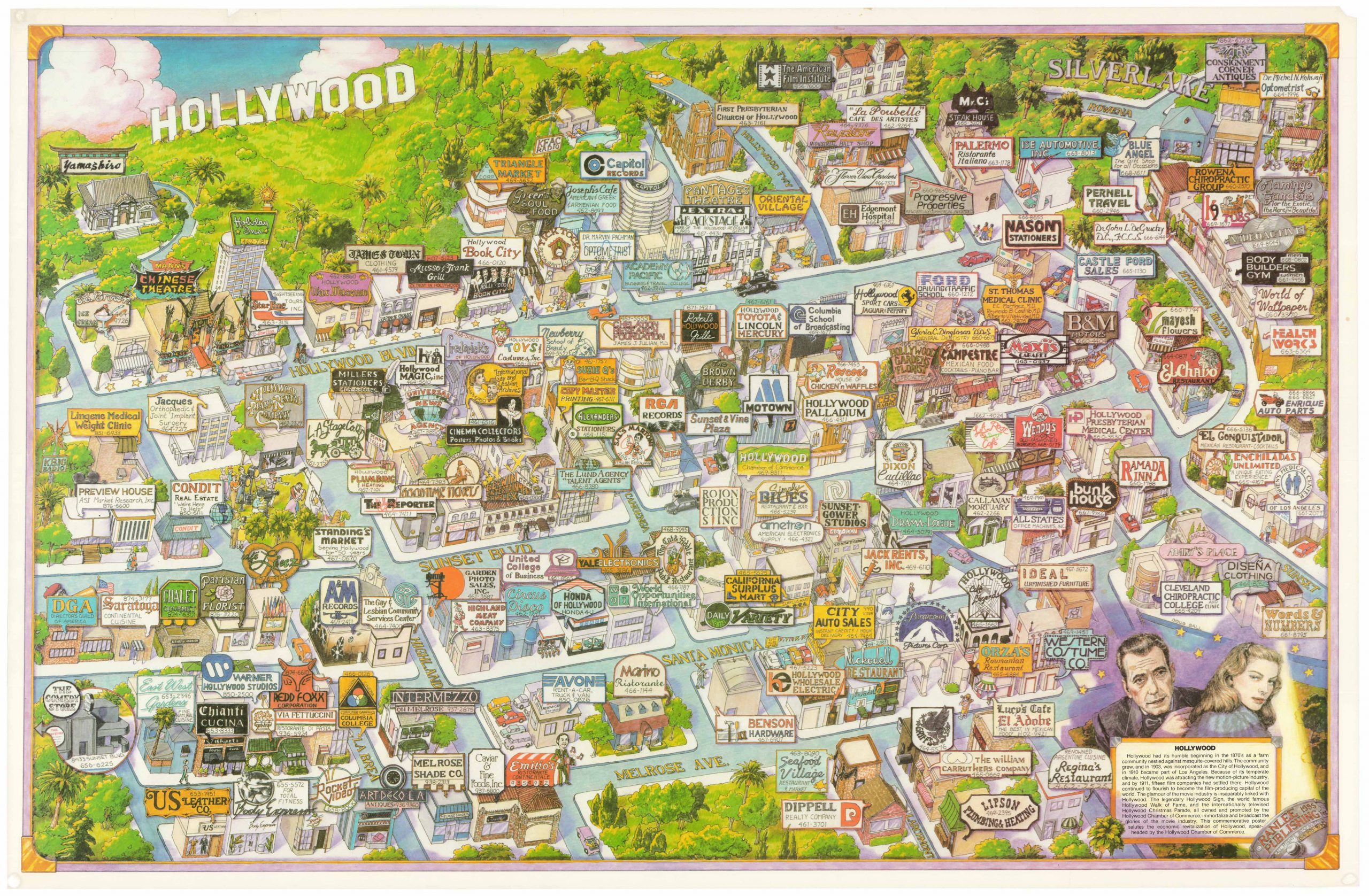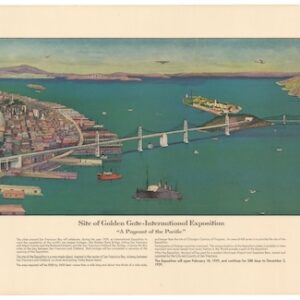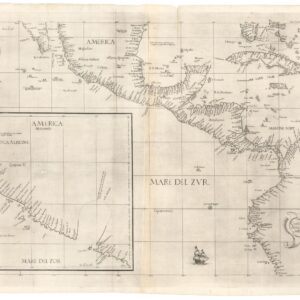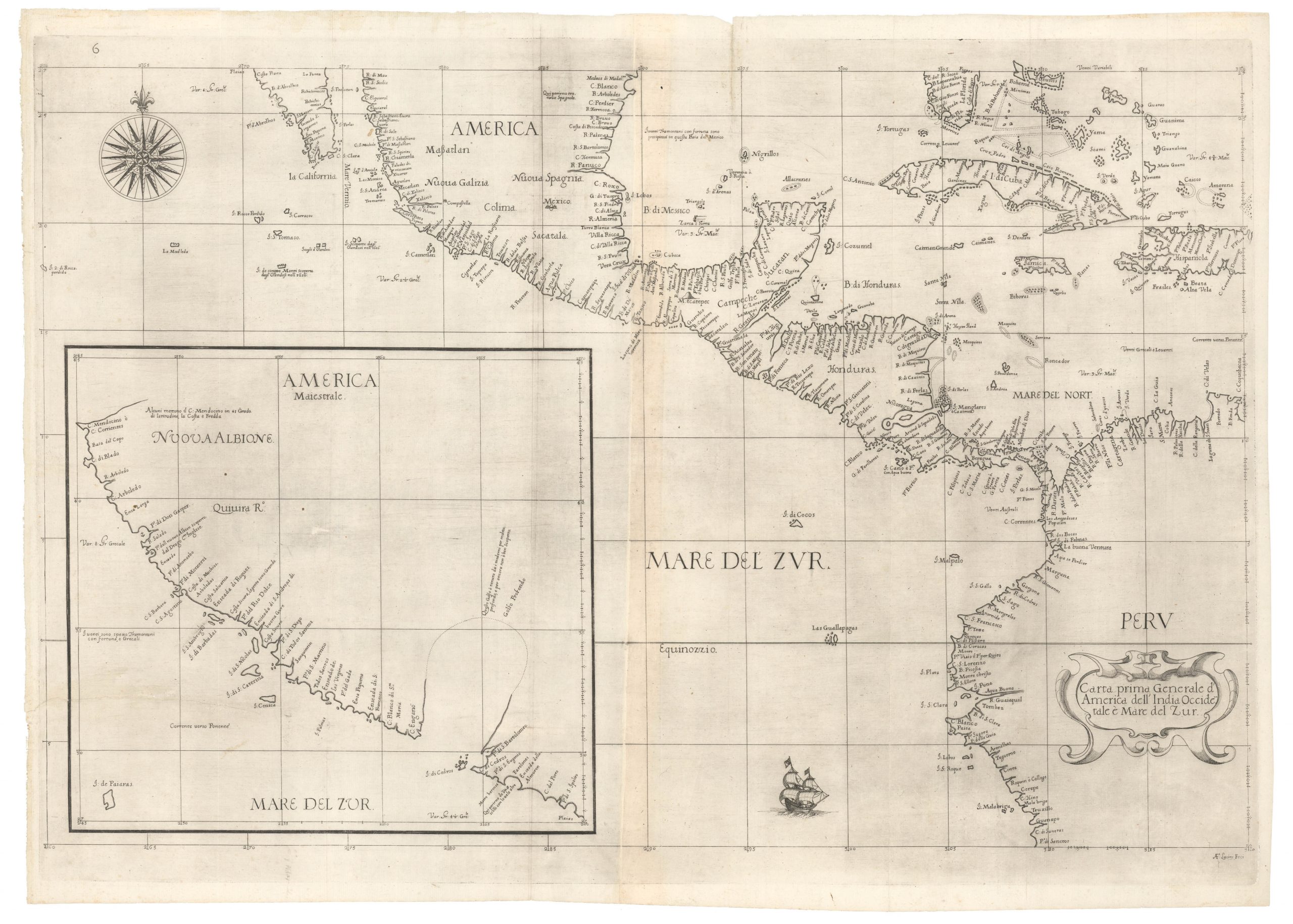A rare and beautiful map of cycling routes in California from America’s Gilded Age cycling boom.
Map of California Roads For Cyclers [with Cycling Atlas]
Out of stock
Description
This richly decorated, full-color map shows the major terrain of most of California in the ornate style of America’s Gilded Age. It is bordered by illustrated advertisements for cycling stores and related businesses, most in San Francisco where the map’s maker, George W. Blum, was based.
By the 1890s, American bike producers were making over 2,000,000 bicycles a year–an astounding number for a country of about 70 million people, many of whom lived in rural areas without paved roads. (See: http://www.slate.com/blogs/the_vault/2013/10/21/history_of_cycling_map_of_possible_routes.html)
California’s coastal climate is, of course, excellent for cycling — never too cold or too hot. San Francisco mapmaker and publisher George W. Blum capitalized on bicycling enthusiasm in creating The Cyclers’ Guide and Road Book of California Containing Map of California in relief with principal Roads, Seven Sectional Maps showing all available Roads for Cyclers from Chico to San Diego, and a Map of Golden Gate Park. 1896. Price, One Dollar.
The full-color map shows the basic topography of about 80% of California (Chico, California, the northernmost town on the map, lies roughly 250 miles (400 km) south of the Oregon-California border), overlaid with railroad lines and a network of “bicycle roads” that cover the state. An inset in the lower left corner shows the southern coast from Santa Barbara to San Diego. In the original guide, it was accompanied by seven regional maps in the same style.
The map offers an impressive system of “bicycle roads,” a somewhat optimistic designation, given what roads must have been like at the time; before the popularization of the automobile, roads were made for horse-drawn carriages. The quality of the roads is labeled, and those labeled “poor” or “very poor” must have been rough rides, especially given that a “good” road in 1895 would hardly have been as easy to ride as today’s blacktop roads.
The map’s border is largely made of illustrated advertisements for cycling stores and a few other cycling-related businesses. The ads themselves are illustrated and filling space between them, Blum has illustrated a leafy vine.
Cartographer(s):
Condition Description
Backed on thin tissue, minor repairs.
References





![Flag Map of California [Signed in pencil by W.J. Goodacre]](https://neatlinemaps.com/wp-content/uploads/2022/01/NL-01134_thumbnail-scaled-300x300.jpg)
![Flag Map of California [Signed in pencil by W.J. Goodacre]](https://neatlinemaps.com/wp-content/uploads/2022/01/NL-01134_thumbnail-scaled.jpg)